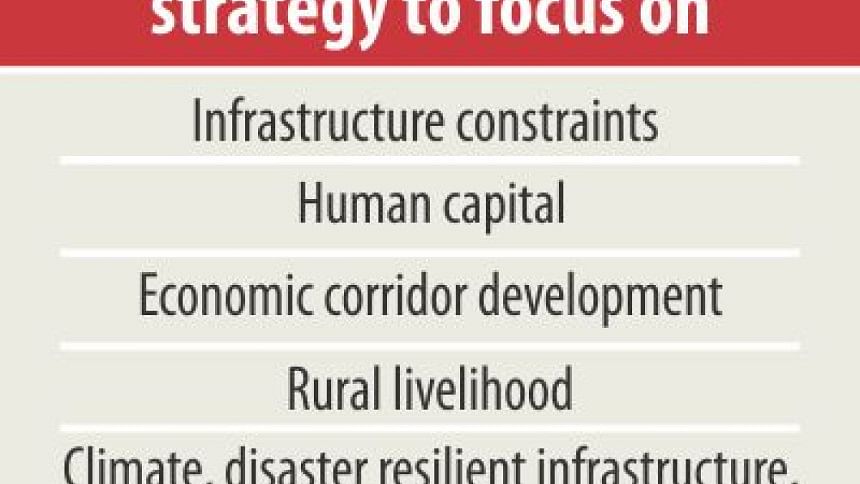ADB raises Bangladesh lending by 60pc

The Asian Development Bank has unveiled a new country strategy for Bangladesh for the next five years in order to help the country diversify its economy and accelerate rural and balanced regional development.
It would adopt a broad-based approach for the Country Partnership Strategy period spanning 2016-20 such that it can respond flexibly to Bangladesh's needs and demands.
Under the new partnership strategy, which was unveiled yesterday at a programme at the National Economic Council in Dhaka, the ADB will provide $8 billion to Bangladesh, up 60 percent from the previous five-year programme.
Half of the lending will be concessional while the remainder will carry market-based interest rates, according to an official of the bank.
“Bangladesh has high investment needs,” said ADB Country Director Kazuhiko Higuchi while making a presentation on the plans.
The country also has sufficient borrowing capacity, thanks to low external debt, mostly concessional foreign assistance, and increased absorptive capacity to plan and implement development projects, he said.
The new plan will seek to help the country boost economic growth upwards of 7 percent and generate more urban and rural jobs. The Manila-based multilateral lender will work to make growth more inclusive while addressing environmental vulnerability. Bangladesh's potential as a regional hub for trade and transport links, under the new South Asia Subregional Economic Cooperation or SASEC plan, will also get attention from ADB.
The ADB investment also aims to create conditions for greater private sector participation, promote public private partnership, address institutional capacity and governance improvement, deepen regional cooperation and integration and promote gender equality.
“It is up to the government to decide how it wants to see the ADB to help the country,” Higuchi added.
The ADB's strategy supports inclusive growth, sustainable development and regional integration, said Mohammad Mejbahuddin, senior secretary of the Economic Relations Division.
He said the new country strategy is aligned with Bangladesh's Seventh Five-Year Plan and complements the strategies of the other development partners.
The senior secretary admitted delays in project implementation on the part of Bangladesh. At the same time, he also asked the ADB to avoid unnecessary delays. In the coming years, the ADB would look at how it can help Bangladesh achieve its Sustainable Development Goals, Higuchi said.
Bangladesh's attainment of lower-middle income status in 2015 is unlikely to have a big impact on its external financing needs over the next five years.
The country will still need significant financing to achieve rapid and sustainable growth and eradicate the remaining poverty.
Freeing the country from poverty and inequality remains a major challenge for Bangladesh, ADB said.
Unless specific actions are taken, extreme poverty in parts of the country and inequality between regions will likely remain, even as the country's economy continues to grow.
Effective implementation of the government's social protection strategy is needed to elevate people out of extreme poverty.
The priorities should include housing and basic services, including primary health care for the poor and disaster risk management to reduce vulnerability and build resilience to extreme weather conditions, the ADB said.

 For all latest news, follow The Daily Star's Google News channel.
For all latest news, follow The Daily Star's Google News channel. 




Comments